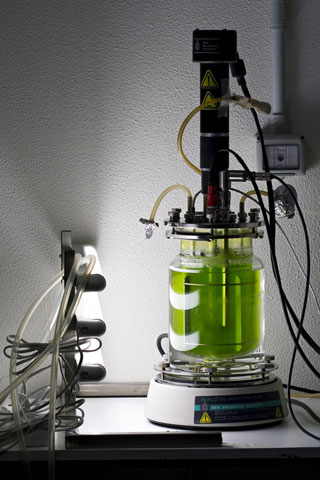
Green algae grows in this bioreactor. Bioreactors are steady-state mixed tanks that keep organisms in permanent exponential growth while continuously diluting with nutrient-rich broth and removing both cells and reaction products. In the Protein Networks Project of this course, students model the system and design a way to keep the cells growing. (Photograph courtesy of Umberto Salvagnin on flickr. CC-BY.)
Instructor(s)
Prof. Ernest Fraenkel
Prof. Forest White
MIT Course Number
20.320
As Taught In
Fall 2012
Level
Undergraduate
Course Description
Course Features
- Lecture notes
- Projects (no examples)
- Assignments and solutions
- Exams and solutions
- This Course at MIT
Course Description
This course focuses on computational and experimental analysis of biological systems across a hierarchy of scales, including genetic, molecular, cellular, and cell population levels. The two central themes of the course are modeling of complex dynamic systems and protein design and engineering. Topics include gene sequence analysis, molecular modeling, metabolic and gene regulation networks, signal transduction pathways and cell populations in tissues. Emphasis is placed on experimental methods, quantitative analysis, and computational modeling.


